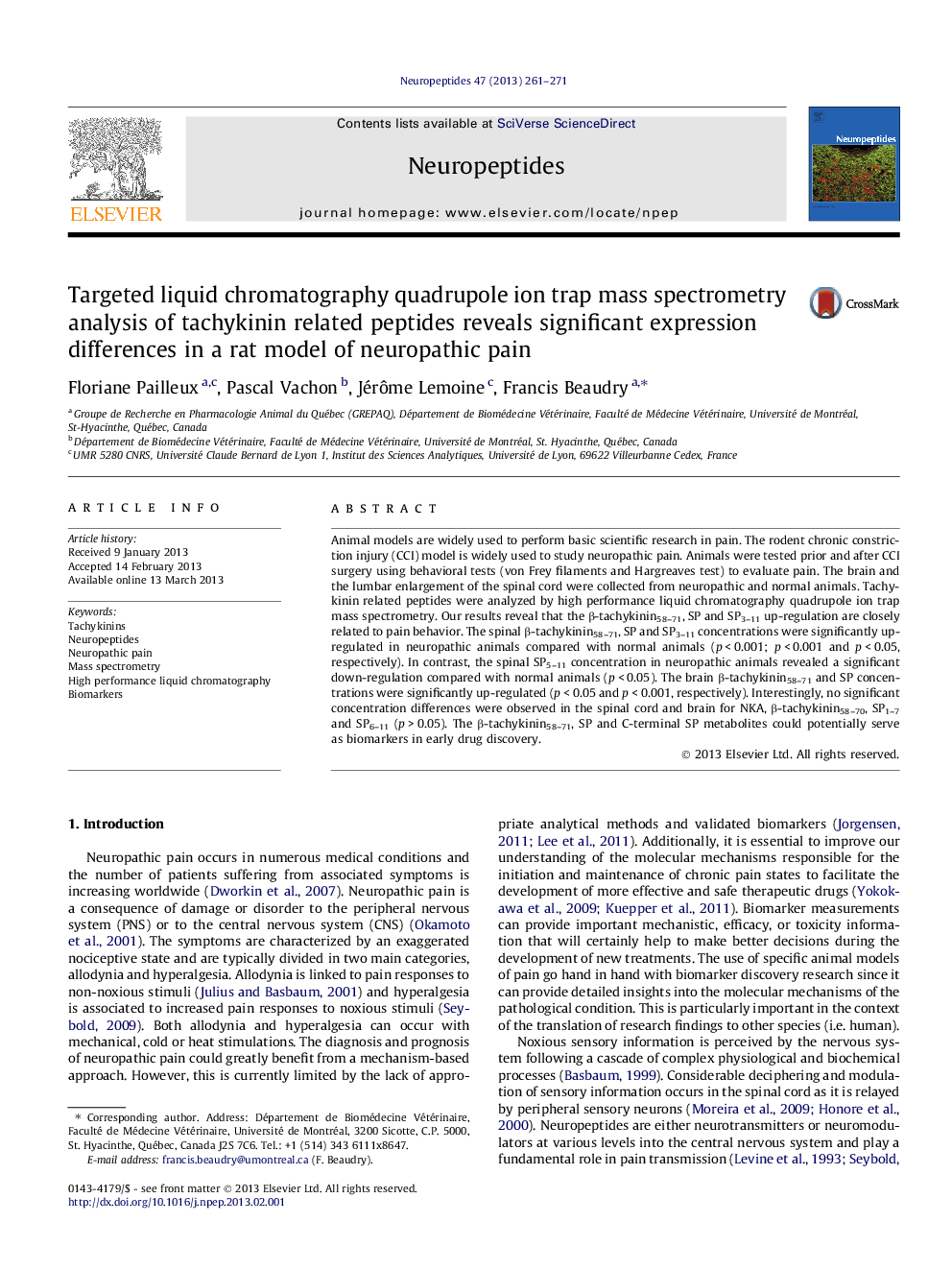| Article ID | Journal | Published Year | Pages | File Type |
|---|---|---|---|---|
| 2808105 | Neuropeptides | 2013 | 11 Pages |
Animal models are widely used to perform basic scientific research in pain. The rodent chronic constriction injury (CCI) model is widely used to study neuropathic pain. Animals were tested prior and after CCI surgery using behavioral tests (von Frey filaments and Hargreaves test) to evaluate pain. The brain and the lumbar enlargement of the spinal cord were collected from neuropathic and normal animals. Tachykinin related peptides were analyzed by high performance liquid chromatography quadrupole ion trap mass spectrometry. Our results reveal that the β-tachykinin58–71, SP and SP3–11 up-regulation are closely related to pain behavior. The spinal β-tachykinin58–71, SP and SP3–11 concentrations were significantly up-regulated in neuropathic animals compared with normal animals (p < 0.001; p < 0.001 and p < 0.05, respectively). In contrast, the spinal SP5–11 concentration in neuropathic animals revealed a significant down-regulation compared with normal animals (p < 0.05). The brain β-tachykinin58–71 and SP concentrations were significantly up-regulated (p < 0.05 and p < 0.001, respectively). Interestingly, no significant concentration differences were observed in the spinal cord and brain for NKA, β-tachykinin58–70, SP1–7 and SP6–11 (p > 0.05). The β-tachykinin58–71, SP and C-terminal SP metabolites could potentially serve as biomarkers in early drug discovery.
